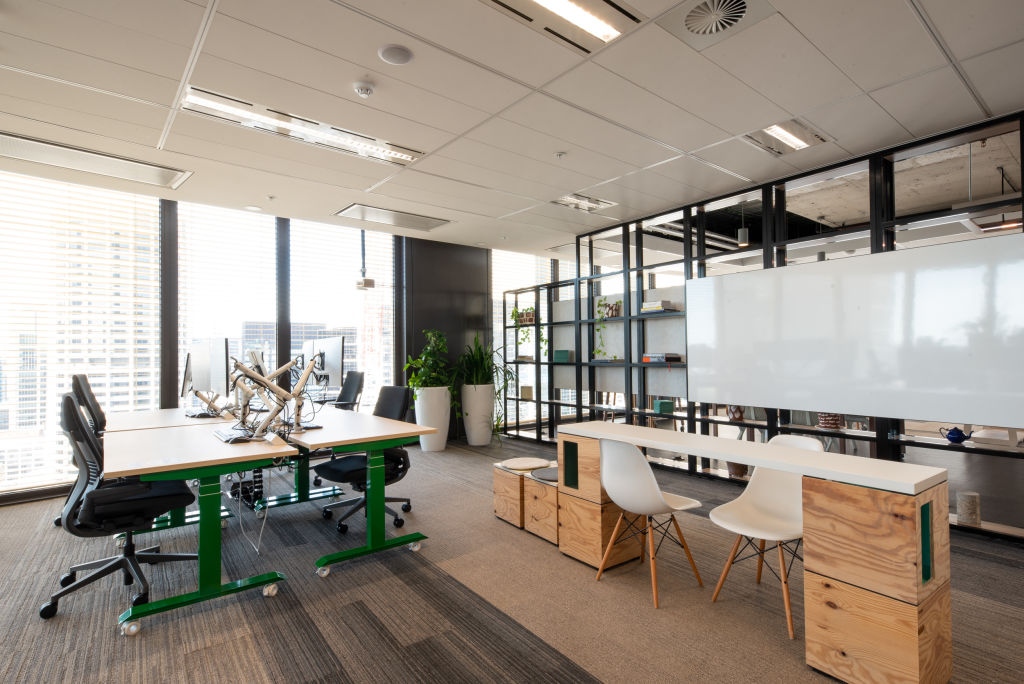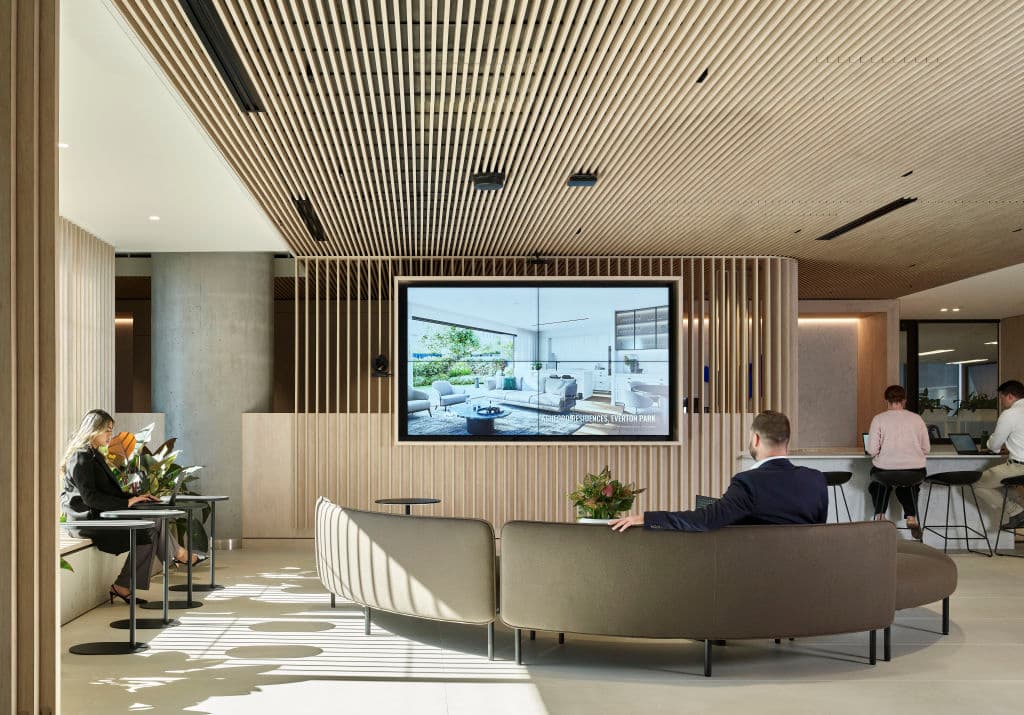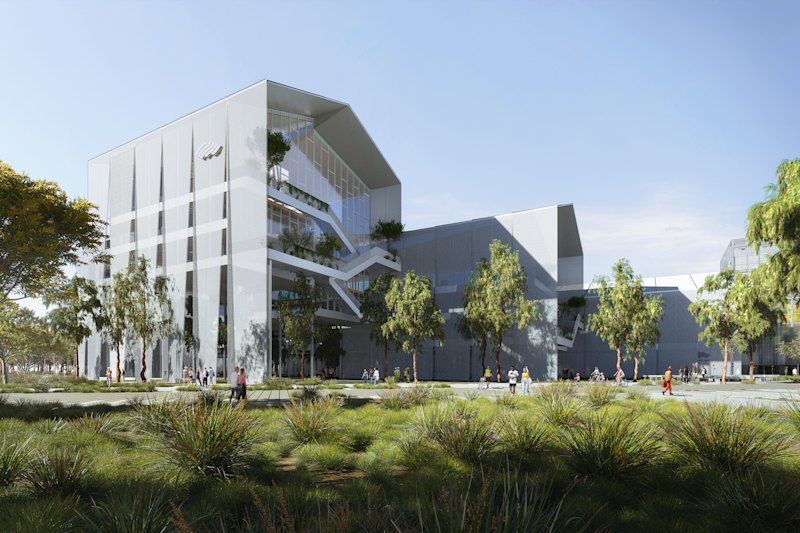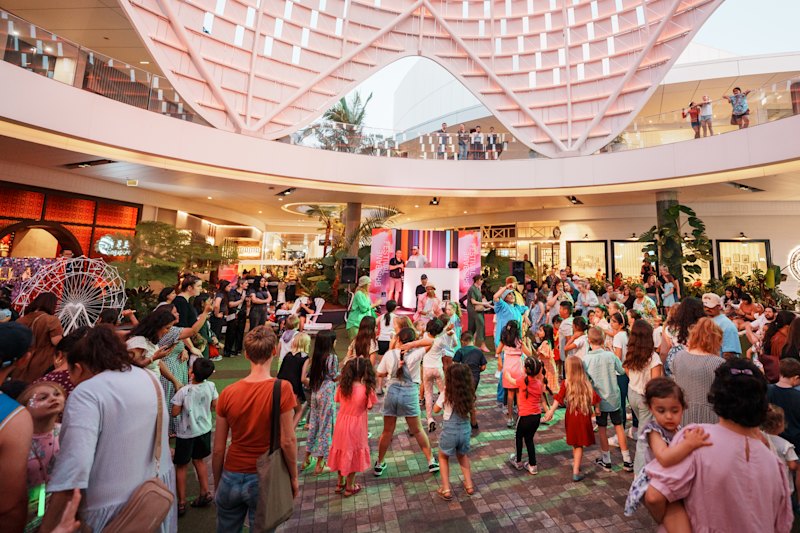
How AI in the office could change your life
It sounds like some wild futuristic fantasy. You’re sitting in your office, wishing you could work closer to a window. So you press a button and, hey presto!, a series of tennis ball-sized robots fixed onto the feet of your desk and chair glide you towards the view.
You have a Zoom or Teams meeting happening in 10 minutes, but all your colleagues seem to have chosen this day and time to come in, and they’re all talking at once. No problem. You press another control, and a partition moves into place around your workspace, and asks you just how high you’d like it to be.
And your chair isn’t comfortable? No worries. Use AI to design exactly what you want and need, and feed it into a 3D printer. In half an hour, you can be sitting pretty.
Yet this isn’t a far-off sci-fi daydream. With the power of AI, these are all options available in the here and now, and coming soon to a workplace near you.
“We have advanced much more quickly than we expected in terms of creating self-learning buildings that can evolve and adapt in terms of our use,” says Arjun Kaicker, co-head of Zaha Hadid Analytics + Insights at Zaha Hadid Architects in London.
“There have been so many advances in AI-based robotics which can help us in every way. It might be furniture configuration, or it might be 3D printing with AI creating instant imaging that can then be used to create 3D models. We see AI as a very exciting tool to be used to make workplaces that suit people’s needs, and make them happier, healthier, more engaged and more productive.”

At the forefront of integrating the power of AI into the design of buildings, Kaicker’s work has been drawn on by Australian developer Mirvac and WORKTECH Academy, an intelligence network exploring the future of work, for a new discussion paper on AI’s potential to transform the workplace of the future.
The paper, The AI Powered Workplace, says AI can have a massive impact not only on how people experience workplaces, but also on how the buildings themselves and their interiors can be designed, and then also managed in the most efficient, cost-effective and sustainable way.
Mirvac chief asset managing officer Victoria Tavendale says one of AI’s most valuable uses is collecting and analysing a high volume of data on the use of office space.
“Once you have access to that dataset, and can run algorithms on it, then you can manage to make buildings work so much more efficiently and sustainably,” she says.
“Right across our portfolio of $2 billion worth of buildings, we are able to have integrated building management platforms in place so we can operate them in the best way possible.
“We have them integrated into new assets or upgrade existing assets to include them so we can optimise usage, avoid wasted space and promote energy usage around the buildings.”

That AI-gathered and analysed data gives all the information needed to make sure buildings are heated or cooled at the right temperatures for the number of people using them at every time of day. The resultant energy savings can be phenomenal.
Sometimes, the buildings’ tenants are surprised and delighted by the savings as well, and the buildings can often share data for the best outcomes. Making sure they work effectively also provides occupants with a better work life.
“Employee experiences have become the buzzwords over the past few years,” Tavendale says. “Attracting workers back to their offices to drive collaboration and output can be essential, and rubbish workplaces don’t cut it anymore.
“No one wants an office that’s too hot or too cold or is badly designed so it doesn’t accommodate different ways of working. But AI can help design and run the best offices and even harness predictive data to make the experience even better. It can sound a bit spooky, but this stuff has so much potential!”
Mirvac manager of strategy and customer Elly Dalziel says one use of AI might be employees walking in and receiving an instant tech connection that will suggest the ideal room to use for their meetings and advise where they should best sit. Pre-booking a gym class could also trigger a booking for the end-of-trip showers and changing rooms.
“That would create immense efficiencies, a heightened workplace experience and ultimately help drive office attendance,” Dalziel says.
At each of Mirvac’s smart buildings – such as Heritage Lanes in Brisbane, Olderfleet in Melbourne, South Eveleigh and the upcoming 55 Pitt Street in Sydney – as well as industrial parks like ASPECT at Kemps Creek and Switchyard in Auburn, the building systems are connected to a high-capacity fibre-optic network and an integrated facilities management platform. This brings together data from all the separate systems such as access control, energy management, CCTV, lighting and space utilisation to find opportunities to improve efficiency and sustainability.

The AI allows a huge amount of information to be collected and studied so complex buildings can be designed, and run, to suit the diverse needs, aspirations and likes and dislikes of the people inside, Kaicker says.
In the design, sometimes AI comes up with weird solutions and suggestions that can’t possibly be workable, but at other times it might throw up ideas that no one has ever thought of before.
“Designers tend to design based on their own experience, but AI can go beyond our biases and uncover new stuff about people’s requirements,” Kaicker says. “The way we see AI is as a very talented and very hard-working junior designer who always needs reviewing.
“Some of its ideas are great; others are weird and out of left field, and terrible. And even though it can be convincing and seductive, it won’t take over for humans for the foreseeable future. For instance, ChatGPT told me the other day about something it said had happened in 2025 and when I argued that it wasn’t 2025 yet, it came back to say, ‘You are right. It’s 2026!’”










